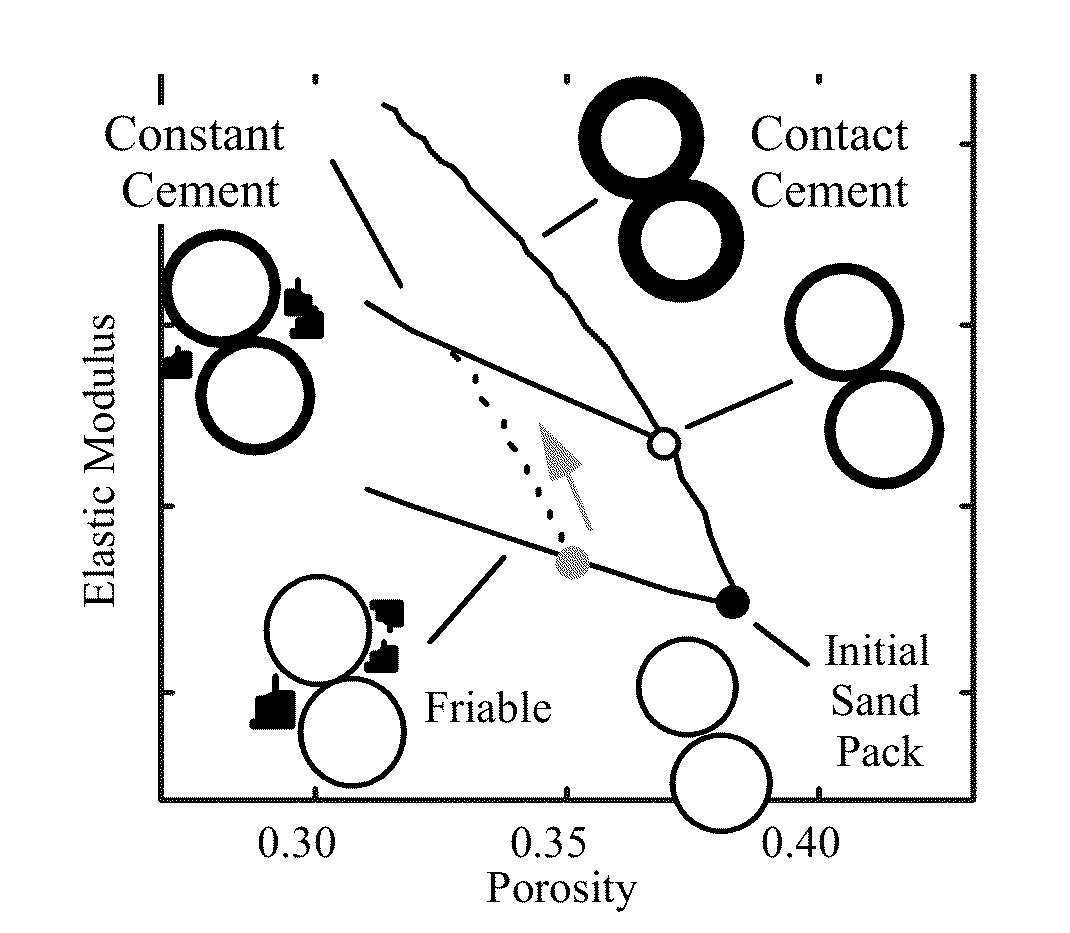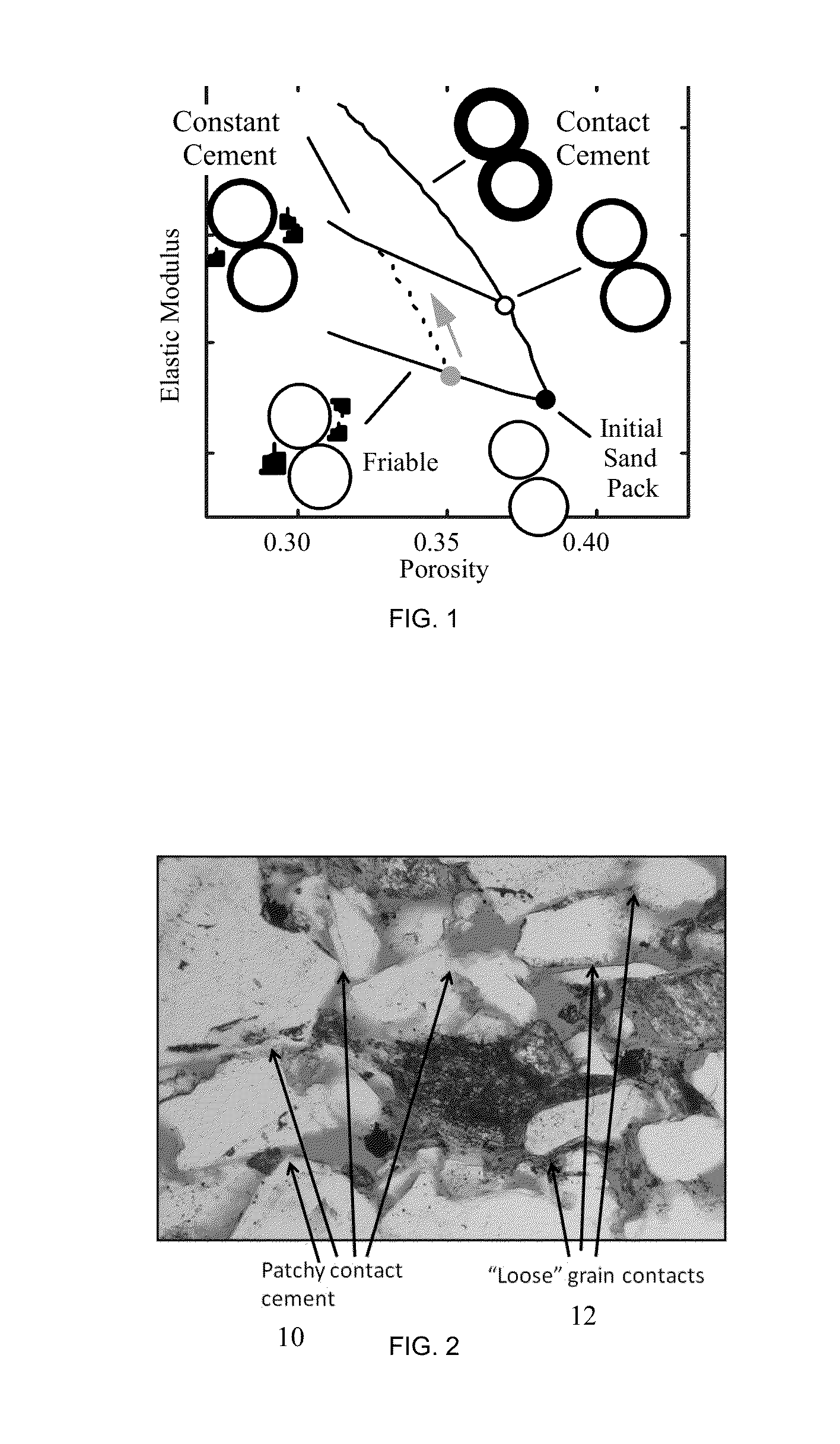Method of predicting the pressure sensitivity of seismic velocity within reservoir rocks
a technology of seismic velocity and reservoir rock, applied in seismicology, instruments, measurement devices, etc., can solve the problem of not illustrating whether and how these values depend on pressur
- Summary
- Abstract
- Description
- Claims
- Application Information
AI Technical Summary
Benefits of technology
Problems solved by technology
Method used
Image
Examples
Embodiment Construction
[0065]An embodiment of the present invention there is provided a method of predicting the pressure sensitivity of seismic velocity within sandstone reservoir rocks, which comprises: defining the degree of cementation of rock as at least one of friable sand, partially cemented rock comprising a degree of cementation up to a level at which the rock is substantially non-compressible (in this example, up to 10% cementation), and cemented rock comprising a degree of cementation at which the rock is substantially non-compressible (in this example, 10% cementation and above). For rock comprising friable sand we define a first model specifying a dependence of seismic velocity upon pressure. For rock comprising partially cemented rock we define a second model specifying a dependence of seismic velocity upon pressure and a weighting function accounting for a degree of cementation of the rock. For rock comprising cemented rock we define a third model demonstrating an insensitivity of seismic v...
PUM
 Login to View More
Login to View More Abstract
Description
Claims
Application Information
 Login to View More
Login to View More - R&D
- Intellectual Property
- Life Sciences
- Materials
- Tech Scout
- Unparalleled Data Quality
- Higher Quality Content
- 60% Fewer Hallucinations
Browse by: Latest US Patents, China's latest patents, Technical Efficacy Thesaurus, Application Domain, Technology Topic, Popular Technical Reports.
© 2025 PatSnap. All rights reserved.Legal|Privacy policy|Modern Slavery Act Transparency Statement|Sitemap|About US| Contact US: help@patsnap.com



